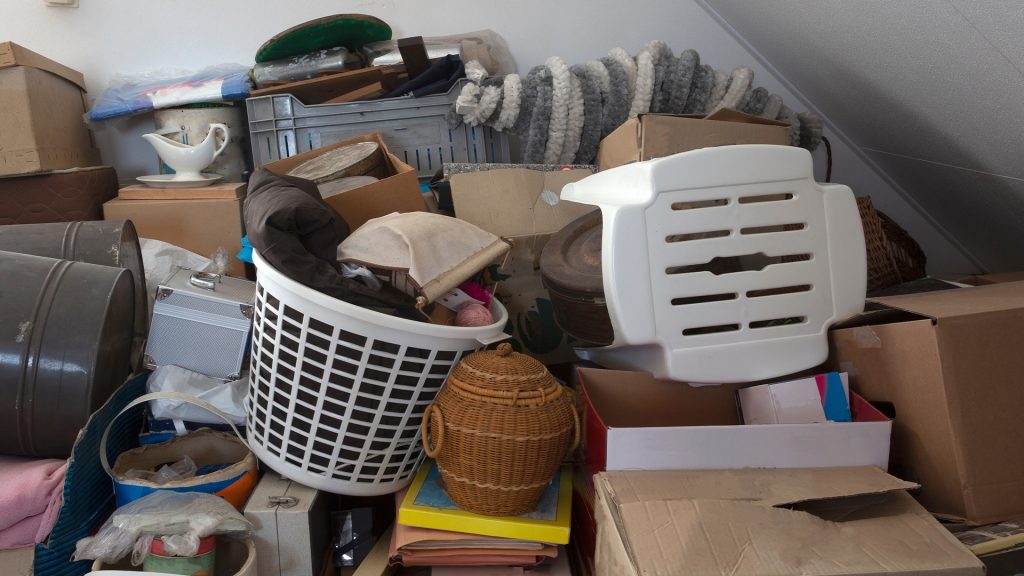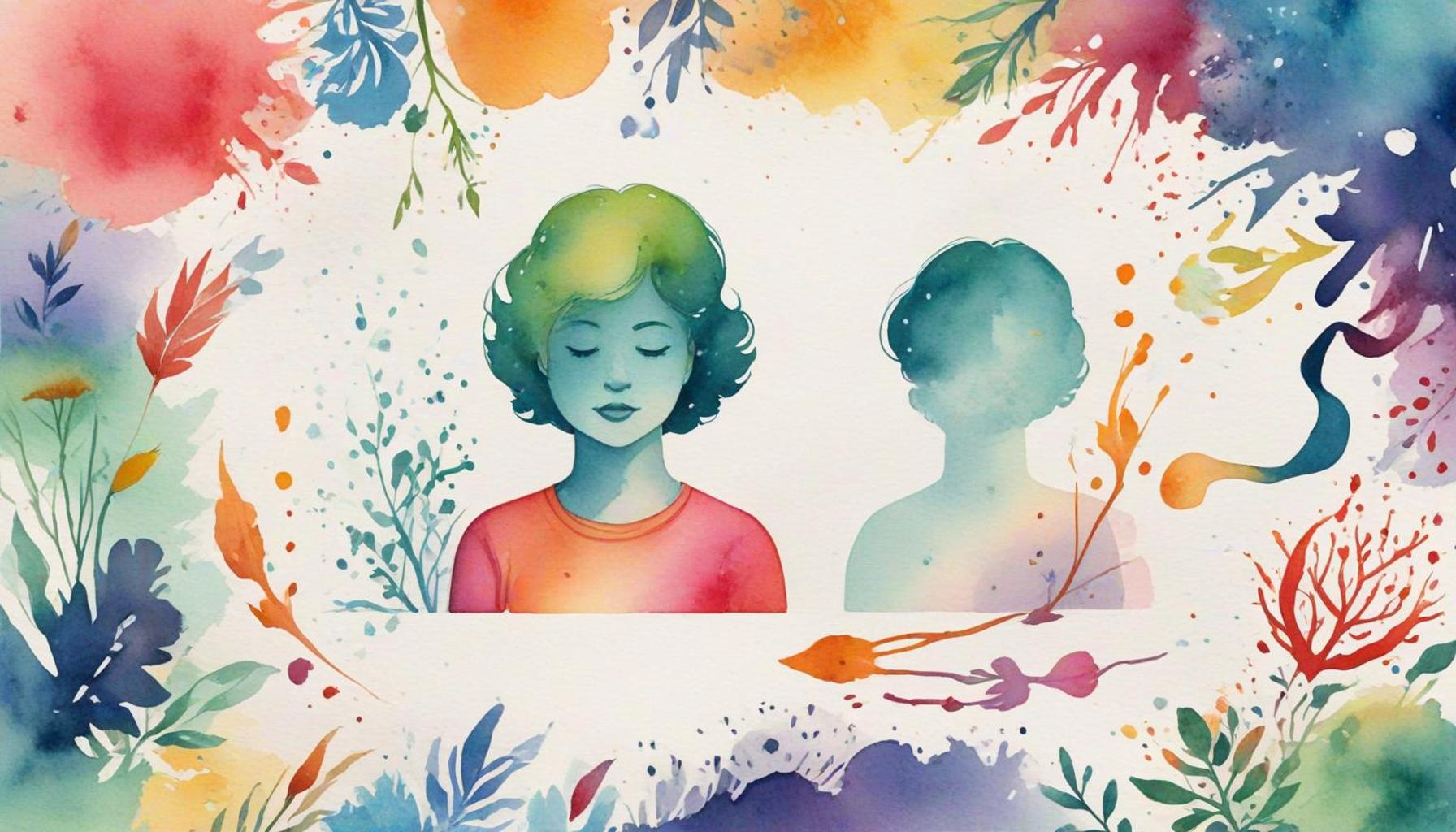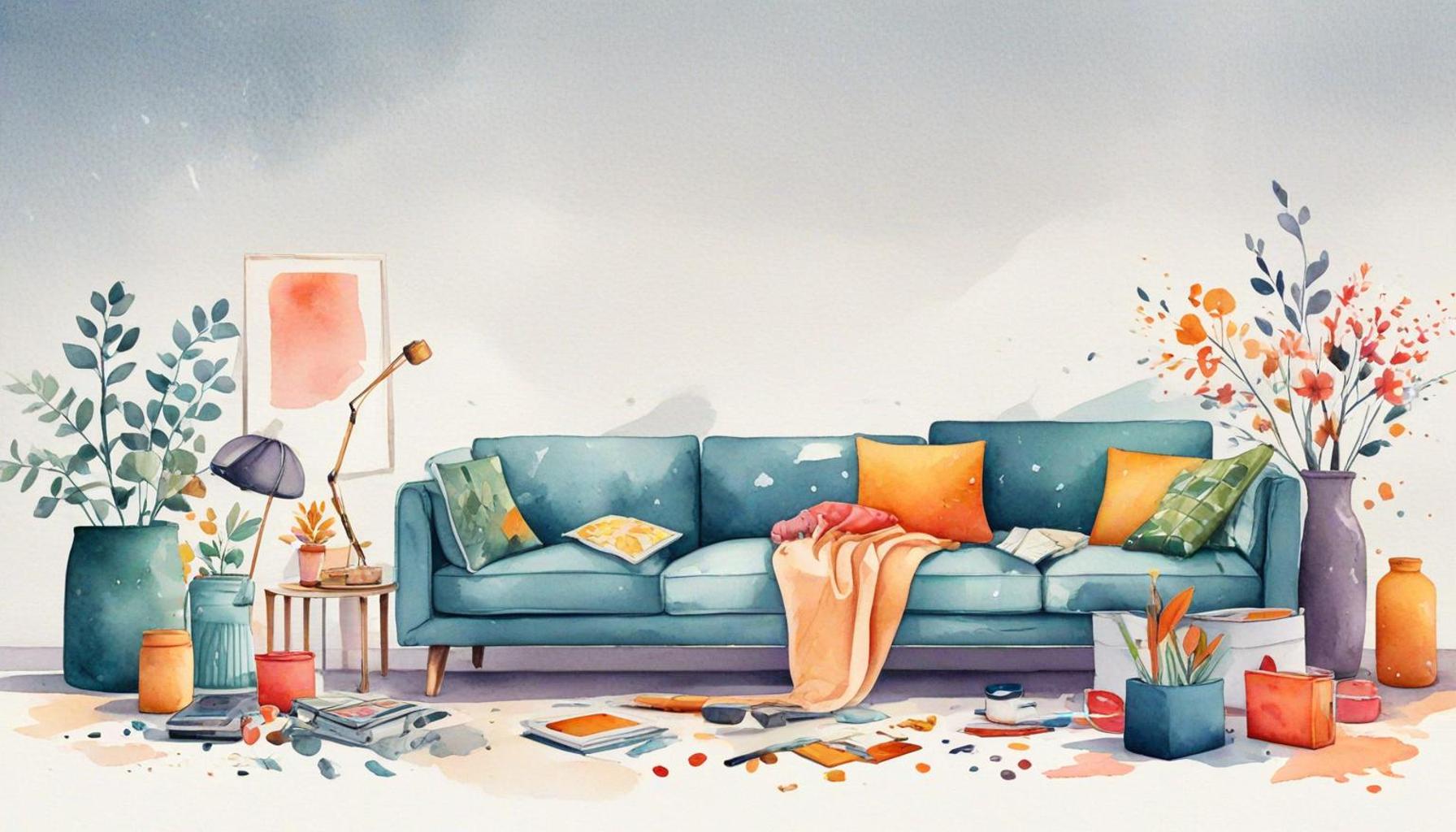The Psychology of Clutter: Understanding the Emotional Roots of Hoarding and How to Overcome Them

Understanding Clutter and Its Emotional Impact
Clutter isn’t merely a physical inconvenience; it often carries significant emotional baggage that can deeply affect an individual’s quality of life. For many, confronting the chaos of hoarding extends beyond the visible piles of items—it evokes intense feelings of loss, fear, and anxiety. Understanding the psychology of clutter is crucial for unraveling these complex emotions, offering pathways toward healing and improvement.
The Roots of Hoarding Behavior
Hoarding can arise from a multitude of underlying issues, each contributing to an individual’s struggle with letting go of their possessions. Some common roots include:
- Trauma: Experiences of trauma, whether from childhood abuse or adult experiences such as natural disasters, can lead individuals to accumulate items as a coping mechanism. For example, someone who has experienced severe trauma may feel a sense of security in holding onto tangible items that remind them of better times.
- Loss: The death of a loved one often triggers the emotional need to hold onto belongings that once belonged to them. This phenomenon can be particularly pronounced in older adults who may find it difficult to separate from the possessions that carry rich memories of their deceased family members.
- Perfectionism: A strong desire for control and order can result in compulsive collecting behaviors. Individuals might hold onto items in the hope of achieving an ideal future scenario, leading to an accumulation of things that they believe may “come in handy” later.
Each of these factors contributes to a deeper emotional struggle, making it challenging for individuals to confront their cluttered spaces. Recognizing these roots is a crucial first step in addressing the problem of hoarding and moving towards reclaiming one’s life.
Consequences of Clutter
The implications of hoarding extend far beyond the physical space, significantly impacting various aspects of life:
- Relationships: Clutter can foster feelings of shame and isolation, straining relationships with family and friends. Loved ones may feel helpless, leading to conflict and misunderstandings as they try to offer assistance.
- Health: Physical safety is often compromised in cluttered environments. Items may block exits, pose trip hazards, or even create fire hazards. The accumulation of dust and allergens can also lead to respiratory issues.
- Mental Well-being: Living amidst chaos can lead to increased levels of stress and anxiety. Clutter often creates a constant sense of overwhelm, contributing to mental fatigue and making day-to-day tasks feel insurmountable.
As we delve deeper into the emotional roots of hoarding, it is essential to explore practical strategies for overcoming these challenges. Understanding the psychology behind hoarding behavior opens doors to healing, facilitating the reclamation of both space and peace of mind. For individuals struggling with clutter, seeking guidance from mental health professionals trained in this area can provide invaluable support, helping them to navigate their journey towards a more organized and emotionally fulfilling life.

DISCOVER MORE: Click here for insights on intentional design
Unraveling the Emotional Landscape of Clutter
As society continues to evolve, the role of material possessions in our lives undergoes a continual reassessment. For some, the line between collecting, saving, and hoarding can blur significantly, leading to challenges in emotional well-being. The psychology of clutter reveals not just why individuals struggle with excess belongings, but also how these behaviors can hinder their lives. By understanding the emotional landscape behind hoarding, we can begin to uncover not just the ‘what,’ but the ‘why’ of clutter.
The Complex Interplay of Emotion and Identity
The items we surround ourselves with often represent more than just physical objects; they can symbolize our memories, aspirations, and even our identities. When individuals hoard, they may be unknowingly engaged in a battle to protect pieces of their past. This psychological interplay makes the act of decluttering feel like an emotional upheaval, as it forces a confrontation with core emotional issues. Key factors include:
- Sentimental Value: Many items are imbued with memories—furniture from a grandparent, toys from childhood, or trinkets from travels. The thought of parting with these possessions can evoke feelings of loss, as if one is relinquishing cherished experiences.
- Fear of Regret: Individuals often fear that discarding items might lead to future regret. This fear binds them to the belief that they will need the item “someday,” leading to an overwhelming accumulation over time.
- Low Self-Esteem: For some, the inability to let go of items can stem from feelings of inadequacy or failure. They may perceive their belongings as a lying testament to success or identity, leading to emotional paralysis when faced with the decision to toss them.
Each of these emotions compounds, creating a labyrinth that is difficult to navigate. Awareness of these psychological triggers can be integral in finding pathways out of the clutter.
Psychological Theories Surrounding Clutter
Several psychological theories help elucidate the behaviors surrounding hoarding. One prominent concept is the attachment theory, which argues that people may form attachments to inanimate objects as substitutes for human relationships. For those who have experienced isolation or lack of emotional connection in their lives, their belongings might serve as a source of comfort and stability.
Moreover, the cognitive-behavioral theory posits that dysfunctional beliefs can contribute to hoarding behavior. These beliefs may include a deep-seated conviction that value lies solely within the physical, leading individuals to erroneously attach their self-worth to their possessions.
The intersection of these psychological frameworks unveils the multifaceted nature of hoarding, demonstrating that decluttering is often a necessary emotional journey rather than a mere organizational task.
By understanding these depths, individuals can start to challenge and change the narratives that keep them entangled in clutter, paving the way toward a more organized and emotionally liberated life.
| Emotional Factors | Impact of Clutter |
|---|---|
| Attachment and Loss | Clutter often symbolizes past relationships and experiences, leading to difficulty in letting go. |
| Stress and Anxiety | High levels of stress from clutter can aggravate mental health issues, creating a detrimental cycle. |
The psychological origins of clutter are deeply entrenched in attachment behaviors. Individuals who hoard may have a profound emotional connection to their belongings, viewing them as extensions of their identity. This attachment often stems from a fear of loss, making it challenging for them to discard items, even those that hold little actual value. As a result, overcoming hoarding behavior necessitates a nuanced understanding of these emotional ties.Moreover, the clutter can manifest as increased stress and anxiety levels. Surrounded by disorganized spaces, many individuals report feeling overwhelmed and less in control of their lives. This sense of chaos can hinder one’s ability to pursue new opportunities, leading to further isolation and mental distress. Addressing clutter is therefore not just about physical space; it embodies the psychological domains of control, self-worth, and emotional stability. By highlighting these aspects, individuals can begin to tackle their clutter through therapeutic interventions and practical decluttering strategies, ultimately reclaiming their environments and peace of mind.
DISCOVER MORE: Click here for tips on boosting your efficiency
Breaking the Cycle: Strategies for Addressing Clutter and Hoarding
Understanding the emotional roots of clutter is only the beginning; the next step involves applying effective strategies to break the cycle of hoarding behavior. These approaches not only target the piles of possessions but also aim to reshape the underlying emotional interactions individuals have with their belongings.
The Role of Professional Support
For many struggling with hoarding, professional intervention can be key. Mental health professionals who specialize in cognitive-behavioral therapy (CBT) can help individuals recognize and challenge the harmful beliefs associated with their clutter. They facilitate a safe space for individuals to explore the significance of their possessions and address the emotions tied to them.
Moreover, support groups can provide individuals with a sense of community and understanding. Engaging with others who share similar challenges fosters an environment of empathy, allowing individuals to voice their struggles without fear of judgment. According to the Hoarding Disorder Research Consortium, connecting with others can significantly enhance motivation and accountability during the decluttering process.
Setting Realistic Goals and Small Steps
Decluttering is often an overwhelming endeavor; therefore, breaking the process down into manageable tasks is crucial. Setting realistic goals can prevent feelings of despair and promote a sense of accomplishment. For instance, individuals may start with a single drawer or a small cupboard rather than attempting to tackle an entire room. This incremental approach can lead to sustainable changes, enabling individuals to experience the emotional relief as each small area transforms.
Using a systematic approach, such as the Four-Box Method, can also assist in making decisions about possessions. This method involves labeling four boxes as: “Keep,” “Donate,” “Recycle,” and “Trash.” By categorizing items, individuals can more easily discern what truly serves them and what they are ready to let go.
Mindfulness and Emotional Regulation Techniques
Integrating mindfulness practices can be a game-changer in addressing hoarding behaviors. Mindfulness helps individuals develop a heightened awareness of their thoughts and feelings, allowing them to respond to urges to hoard with greater clarity. Techniques such as deep breathing, meditation, and journaling can assist individuals in processing the emotions tied to their clutter, ultimately leading to more intentional decision-making.
Additionally, learning emotional regulation techniques empowers individuals to cope with the anxiety that often accompanies the act of decluttering. For instance, recognizing moments of overwhelming distress and using grounding exercises can make the process less daunting. These practices show that the heart of overcoming clutter often lies in cultivating emotional resilience.
Reframing Value: Shifting Perspectives on Possessions
Developing a new perspective on the value of possessions is essential in the decluttering journey. Help can come from visualizing how freeing oneself from excess can lead to a more meaningful and less chaotic life. One practical approach is to ask oneself the question: “Does this item add value to my life?” If the answer is no, it becomes easier to release the emotional tie to it.
Furthermore, redefining the term “value” can shift perceptions. Instead of associating value with ownership, individuals might focus on experiences or relationships, allowing them to prioritize what truly matters. This cognitive shift can aid in dismantling the hoarder identity that is often tied to material possessions, opening the door to healthier coping mechanisms.
Each step toward decluttering represents not just a physical cleaning but also emotional healing. As individuals embark on this transformative journey, the focus remains not only on the tangible items but also on nurturing a healthy relationship with their emotions and their space.
DISCOVER MORE: Click here for insights on enhancing your personal organization
Conclusion: Embracing Change and Healing Through Mindfulness
As we delve into the psychology of clutter, it becomes increasingly clear that hoarding is not merely a physical challenge but a complex emotional landscape requiring understanding and compassionate intervention. The emotional roots of hoarding behaviors often stem from deeper issues such as anxiety, loss, or a struggle with identity, making the journey towards decluttering a holistic process of mental and emotional healing.
Effective strategies, such as seeking professional support, engaging in community discussions, and setting realistic goals, lay the groundwork for recovery. Integrating mindfulness practices and emotional regulation techniques can empower individuals, helping them to cultivate resilience in the face of overwhelming feelings tied to their possessions. Utilizing methods like the Four-Box Method assists in sparking practical change, while shifting perspectives on value promotes a redefined relationship with one’s belongings and surroundings.
Ultimately, overcoming clutter yields not just an organized space but a profound transformation in mental clarity and emotional well-being. By embracing small steps and mindful practices, individuals can break free from the grips of hoarding, leading to a life that is both meaningful and fulfilling. Each decluttered area is a reflection of emotional growth and a testament to the resilience of the human spirit, where freedom from clutter opens doors to new experiences, memories, and connections.
As you embark on this journey, remember that recovery from hoarding is a path marked by patience, understanding, and support. Through exploration and acceptance, the daunting emotional ties to clutter can evolve into pathways of personal liberation and growth.


